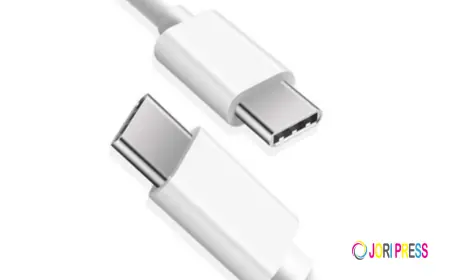ADA Directional Signs: A Must-Have for Inclusive Navigation
At QC Signs & Graphics, a sign company in Charlotte, NC, we specialize in creating ADA compliant signs for businesses from all industries.

When customers, visitors, or employees step into your building, they expect to find their way around easily. Whether it’s locating a restroom, conference room, or emergency exit, clear navigation is a vital part of the overall experience. This is where ADA directional signs play an important role. More than just markers, these signs are about accessibility, compliance, and ensuring that everyone—regardless of ability—can move through your space with confidence.
In this article, we’ll explore why ADA directional signs are essential, what they require to stay compliant, and how businesses can use them to create an inclusive and welcoming environment.
What Are ADA Directional Signs?
The term “ADA directional signs” refers to wayfinding signage that complies with the Americans with Disabilities Act (ADA) standards. These signs help people locate specific areas within a facility, such as:
-
Restrooms
-
Stairwells and elevators
-
Exits and emergency routes
-
Departments, suites, and offices
-
Reception or information desks
Unlike regular wayfinding signs, ADA-compliant ones include specific design features to make them accessible to people with visual impairments, including tactile lettering, raised characters, and braille.
Why ADA Directional Signs Matter
1. Promote Accessibility for All
Accessibility is not a luxury—it’s a necessity. People with visual impairments rely on tactile lettering and braille to navigate unfamiliar environments. Proper ADA directional signs ensure that they can move around independently without constantly needing assistance.
2. Legal Compliance
Businesses are legally required to comply with ADA signage standards. Failure to install compliant signage can lead to penalties, lawsuits, or costly renovations. By investing in ADA directional signs, you’re not just creating a better experience but also protecting your organization from legal risk.
3. Enhance Safety
In emergencies, clear navigation is critical. ADA directional signs guide people quickly to exits, stairwells, or safe zones, ensuring safety during fire drills, evacuations, or other urgent situations.
4. Improve Visitor Experience
Even for people without disabilities, clear wayfinding reduces frustration. Visitors feel more welcomed and comfortable when they can easily find where they need to go. This reflects positively on your business or institution.
Key Requirements for ADA Directional Signs
To meet ADA standards, directional signs must include specific design elements:
-
Raised Characters: Letters must be raised at least 1/32 inch and in uppercase.
-
Font Choice: Sans serif fonts like Helvetica or Arial are preferred, as they are easier to read.
-
Contrast: There must be a strong contrast between text and background, such as white text on a dark background.
-
Braille: All ADA directional signs must include Grade II Braille beneath the text.
-
Mounting Height: Signs should be mounted 48–60 inches from the floor, making them accessible for both standing and wheelchair users.
-
Non-Glare Finish: Glossy or shiny finishes create glare, making signs difficult to read. ADA signs must have a matte or non-glare finish.
By following these guidelines, businesses ensure that their signs are both functional and legally compliant.
Where Should You Place ADA Directional Signs?
ADA directional signs should be placed anywhere navigation is necessary, including:
-
Corridors and hallways – directing people to offices, departments, or amenities.
-
Elevators and stairwells – marking accessible routes or alternate exits.
-
Restrooms – especially important for indicating gender-neutral, family, or accessible facilities.
-
Lobbies and entryways – providing visitors with clear directions from the start.
Strategic placement ensures that visitors never feel lost inside your building.
The Benefits of Custom ADA Directional Signs
Some business owners worry that ADA signs will disrupt their interior design. The truth is, ADA-compliant directional signs can be both functional and stylish. With today’s technology, you can customize signs to:
-
Match your brand colors and fonts
-
Use unique materials like acrylic, metal, or wood
-
Incorporate your company logo
-
Maintain a professional and modern aesthetic
By choosing custom ADA directional signs, you achieve the perfect balance of compliance, function, and design.
How ADA Directional Signs Support Inclusivity
Inclusivity is about making every visitor feel welcome. ADA directional signs are not just for people with visual impairments—they create an environment where everyone has equal access to information and navigation.
Imagine a first-time visitor entering your office complex. Without clear signage, they may feel anxious or frustrated trying to find the right floor or suite. For someone with limited vision, this challenge is even greater. By providing ADA-compliant wayfinding, you show a commitment to inclusivity and respect for all.
Choosing the Right Partner for ADA Directional Signs
Not all signage providers are familiar with ADA standards. To ensure your business remains compliant, it’s important to work with a professional sign company that understands the regulations and can guide you through the process. An experienced partner will:
-
Conduct a site survey to identify where signs are needed
-
Ensure all signs meet ADA regulations
-
Help with design customization to align with your brand
-
Provide professional installation for accuracy and durability
Conclusion
ADA directional signs are more than just arrows and labels—they are a must-have for inclusive navigation. They promote accessibility, improve safety, and create a welcoming experience for all visitors. By investing in ADA-compliant signage, your business not only meets legal requirements but also demonstrates a commitment to inclusivity and professionalism.
If you’re looking to upgrade your wayfinding system, consider working with a signage expert who can design and install custom ADA directional signs that meet standards while complementing your brand identity.
Accessibility isn’t optional—it’s essential. Make navigation easier, safer, and more inclusive with ADA directional signs.
What's Your Reaction?
 Like
0
Like
0
 Dislike
0
Dislike
0
 Love
0
Love
0
 Funny
0
Funny
0
 Angry
0
Angry
0
 Sad
0
Sad
0
 Wow
0
Wow
0


















































